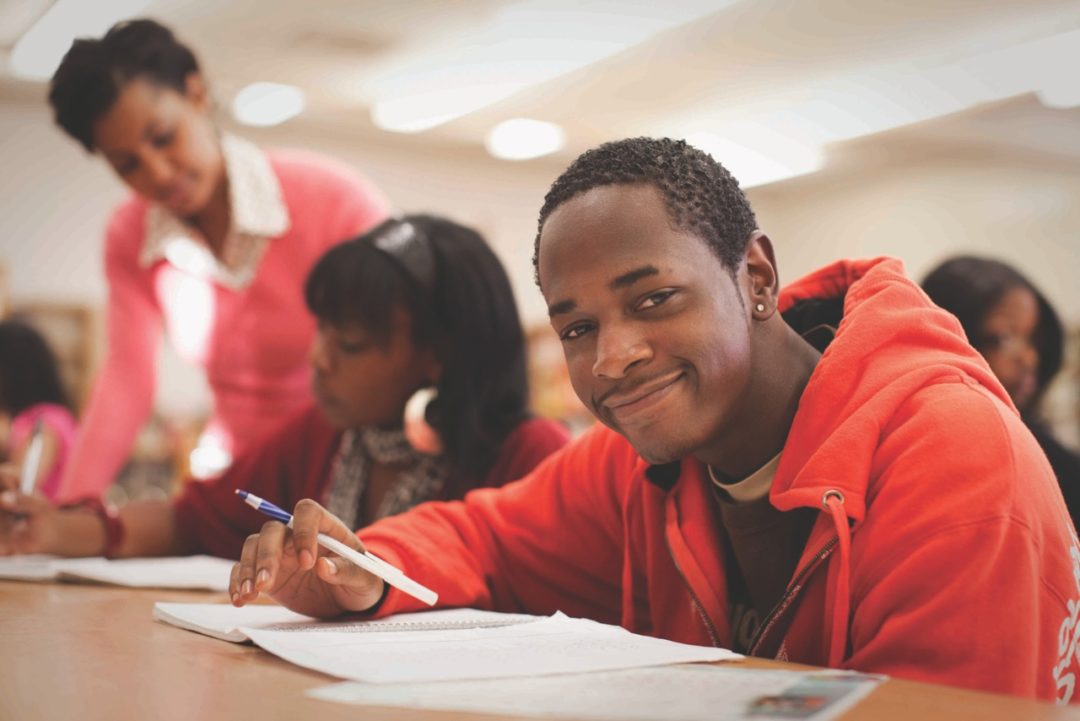Notice your body. Lengthen your spine by sitting tall and straight. Feel your feet planted on the floor. Focus on your belly and imagine a balloon in that space. Breathe in slowly and deeply through your nostrils, imagining the balloon inflating, getting bigger, larger. Hold. Then slowly exhale through your mouth, imagining the balloon deflating. Practice this a few more times. Notice how you are feeling in the present moment.
You have just controlled your heart rate, decreased your blood pressure, reduced stress chemicals in your brain, improved your emotional regulation and executive functioning, developed your physical awareness, increased your ability to focus and given yourself an experience of calm. You have just practiced mindfulness. It took less than a minute, and cost nothing.
Imagine if every teacher across the country started tests this way. Consider what could happen if we practiced breathing with kids in moments of conflict instead of sending them to detention. What impact could this have on a child’s ability to focus, regulate emotion and build resilience? What impact could mindfulness practice have on a teacher’s stress level, job satisfaction and ability to connect with students? We tell kids to focus. Why don’t we teach kids how to focus? Why don’t we teach mindfulness to kids?
“She can’t sit still.”
“He’s so emotional, he can’t cope.”
“He’s impulsive, and can’t control himself.”
I have heard these phrases time and again as teachers seek intervention support for their kids. While brain breaks help discharge activation, 1:1 interventions build connection. While behavior plans and screening for ADD and trauma may give us insight, we still need to teach kids the self-regulation techniques they need to be successful.
So, what is mindfulness and how can it help schools? Mindfulness is paying attention to what is happening in the present moment, without judgement. When we practice mindfulness, we rest our awareness on body sensations, emotions, thoughts, senses and environment.It does not always look like sitting still and quiet. We can practice mindfulness with movement, listening, eating, walking – the possibilities for present moment awareness are endless.
When people practice mindfulness in calm times, they are building neuropathways for coping when things get difficult. In the same way we train our muscles to get stronger, mindfulness trains our brains to manage impulses, emotions and sensations. Instead of punishing behavior, mindfulness teaches a strategy for finding focus.
The goal of mindfulness is not to stop emotion or thought: it is to notice and name emotions. When feelings are labeled, we are not at their mercy. Pretty powerful, considering that research shows when we identify emotion, thought and sensation it decreases responses in the amygdala, the area of the brain that detects fear and sets off a series of biological actions (Lieberman, 2007). When we have trained our brains in this way, we automatically reintegrate the cognitive brain to respond in situations rather than default to the fight, flight or freeze functions of the primitive, sensory brain.
Research shows that mindfulness changes the human brain. After eight weeks of regular mindfulness practice, brain volume increases in two areas: the hippocampus, which is responsible for learning, storage of memories, spatial orientation and regulation of emotions, and the Tempo parietal junction, which is responsible for empathy and compassion. One area where brain volume decreased was the amygdala, the structure responsible for triggering the fight-or-flight responses.
I have seen the impact of consistent practice on kids and teachers first hand. Lucy (pseudonym), a first grader, was struggling to stay in her seat and complete any tasks. Academically, Lucy was impacted by her inability to pay attention. Her teacher was considering having her go back to Kindergarten. We decided to implement a morning mindfulness break. Soon Lucy was able to identify when her body felt wiggly, and then she would choose a practice to, “help the wiggles calm down.” A few months later, Lucy’s teacher reported that Lucy was consistently demonstrating she was at grade level academically, and was having more success with completing tasks. The teacher also noticed that when Lucy was losing focus, she closed her eyes at her seat and put her hand on her belly to feel her breath. The teacher asked Lucy to teach the whole class how to practice mindfulness. Before they took a test that week, some of the kids had requested to practice again. The teacher noticed her own stress level had reduced as they added mindfulness to their school day. This is the power of mindfulness practice.
So, what do we have to lose by adding a moment of awareness to each day?
Zapeleta, Kristyna. June 26, 2017
Neuroscience of Mindfulness: What Happens to Your Brain When you Meditate
Observer.Retrieved from: http://observer.com/2017/06/neuroscience-mindfulness-brain-when-you-meditate-development/
Lieberman MD, Eisenberger NI, Crockette MJ, Tom SM, Pfiefer JH, Way BM. May 18, 2007
Putting feelings into words: affect labeling disrupts amygdala activity in response to affective stimuli
Psychological Science 421-8.Retrieved from: https://www.ncbi.nlm.nih.gov/pubmed/17576282


